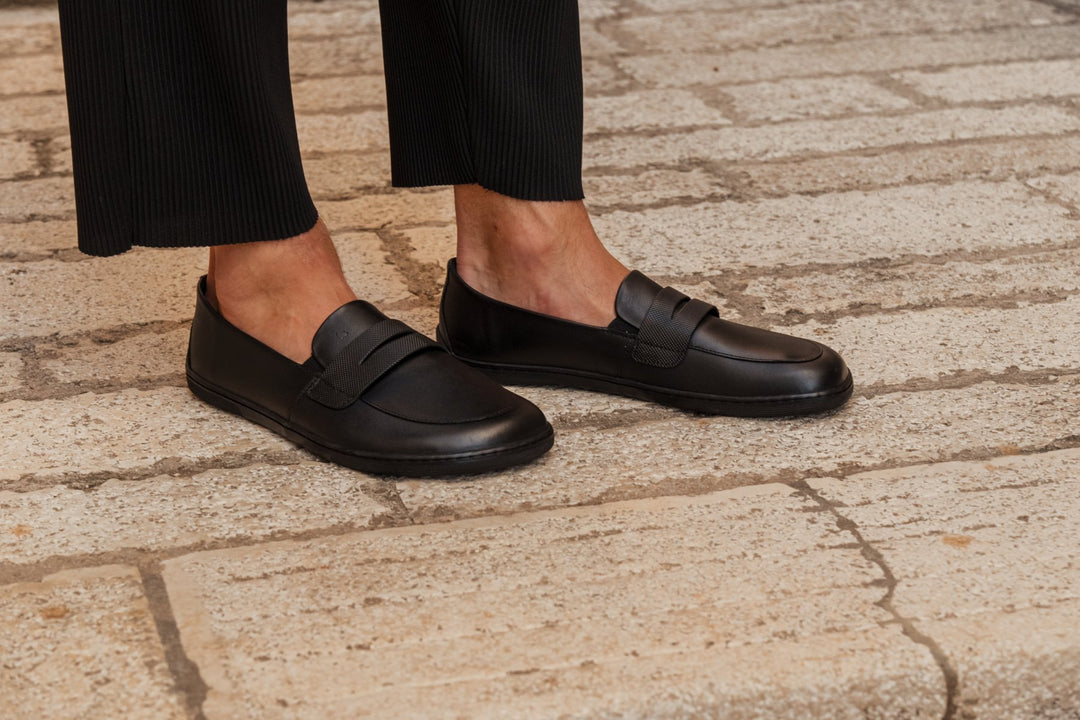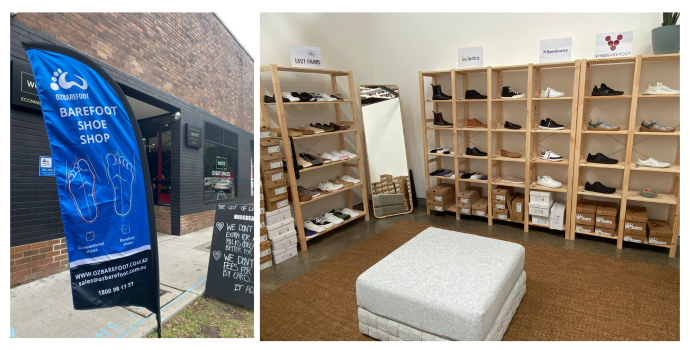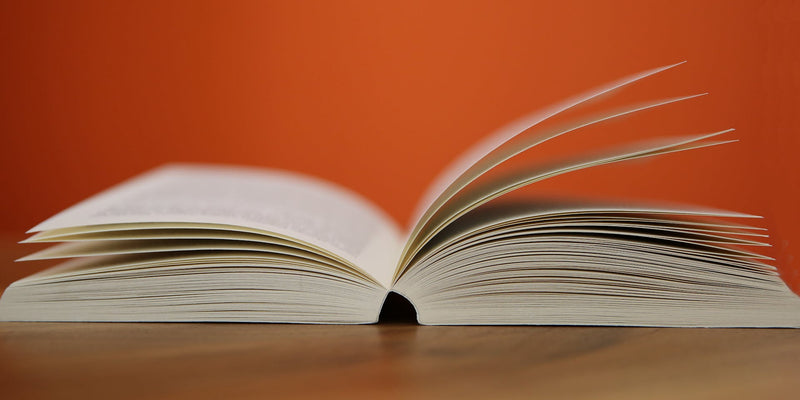Are minimalist shoes good for running and walking?
Barefoot shoes aim to mimic the natural biomechanics of movement without shoes. They offer a solution to return to natural foot mobility in modern environments by offering the right amount of well-designed protection without restriction.
When feet are free of the constrictive binds of conventional shoes, they can tap into a greater range of movement and build up strength and agility for better foot health and function.
Athletes and everyday people alike can benefit from making the switch to barefoot shoes. Whether it's for running, walking, or anything in between, there's a barefoot shoe up to the task.
Though barefoot shoes are often more popular amongst runners than walkers, there's a strong argument to be made that they're great for both, and for different reasons. Let's delve into the science behind why.
Are Barefoot Shoes Good For Running?
It's crucial to note that transitioning to running in minimalist barefoot shoes is not advisable for individuals new to barefoot-style footwear. Adequate foot adaptation is essential, and developing strong foot and ankle muscles, along with mastering proper barefoot running techniques, is a prerequisite to prevent potential injuries.
Did you know: according to an Australian study, more than 1 in 10 people are experiencing regular foot pain with females over 50 being the most at-risk group? (1)
What Makes Barefoot Running Shoes Different?
Before understanding how barefoot shoes affect posture and mobility, it's first essential to understand the basic design principles that set barefoot shoes apart.
Barefoot shoes include a number of criteria that differentiate them from conventional shoes including:
- A Wide Toe Box: Barefoot shoes feature wide toe boxes, designed to mimic the natural shape of the foot with the big toe as the outermost point.
- Thin Soles: Barefoot shoes typically have thin soles, ranging from 3mm to 20mm for various preferences and terrains.
- Zero-Drop Heel: Minimalist shoes have a zero-drop heel, ensuring an even level between the toes and heel, unlike most regular shoes with elevated heels.
- Lightweight + Flexible Shoe Materials: Barefoot shoes prioritize lightweight and ultra-flexible materials to replicate the feeling of barefoot walking, with some models even capable of being folded up.
Read more: Barefoot Shoes vs. Regular Shoe - The Essential Differences
Breaking Down Barefoot Shoe Running
Many people who delve into the fascinating rabbithole of barefoot shoes find their way in by learning about proper running techniques. It's not secret the the running barefoot shoe community is one of the largest groups of barefoot shoe users, and it completely understandable why.

Most regular running shoes have an extremely thick and cushioned sole with an elevated heel. This may seem like the quintessential design of running shoes, but the truth is that this design style has only been popular for a handful of decades and it became more extreme with time. The modern design style certainly has its perks, but they don't come without repercussions.
1) Heel Striking Vs Forefoot Striking
The thick sole of conventional shoes can be quite comfortable to run on since it offers a gentle feel and perhaps even adds some bounce to each stride. The issue however is that the thick sole also dulls the sensations of your foot striking the ground.
This leads to heavy heel striking patterns which cause unnecessary wear and tear on the body. Heavy heel striking has been linked to increased occurrence of soft tissue damage and stress fractures which can wreak havoc on the body over time (2).

Barefoot shoes can completely alleviate this problem because of their thin sole design. Since barefoot shoes offer very little in the ways of cushion, runners will get much more clear sensational feedback on the quality of their running technique. It will be uncomfortable to clomp around heel first without padding, so runners naturally resort to a forefoot strike pattern instead.
This allows the natural spring of the ankle joint and surrounding muscles to dampen the blow of each step and avoid the blunt impact stress of landing heel-first. It may take some time to get used to this different way of running if you're accustomed to regular running shoes, but with time it will feel like a much more natural way of moving.
Did you know: one of the earliest versions of running shoes were a lightweight shoe made of rubber and cloth. This made them noticeably quiet to walk walk in which led to them being dubbed "sneakers".
2) Muscle Activation
Another major area where barefoot running shoes outperform conventional shoes is in their ability to activate small muscles in the feet, ankles and legs. The padding and built-in arch support of thick-soled running shoes allows runners to disengage use of their intrinsic foot muscles.
Feet are highly complex areas of the body with 26 bones, 33 joints and over a hundred different muscles, tendons and ligaments working in tandem (3). The more restrictive, padded and inflexible the shoes are, the less able you'll be to actually utilize this intricate orchestra of anatomy for optimal movement and athletic performance.
Barefoot shoes encourage far more engagement in the calf muscles, muscles that support the foot arch and small stabilizing muscles (4). This means your feet should become better developed, more durable and more athletically capable from wearing barefoot shoes while running.
3) Gait Adjustments
A final important distinction between running in barefoot shoes and running in regular shoes is the way it affects the cadence and length of each stride. This is mostly because of the change from heel striking to forefoot striking seen in barefoot shoe wearers.
Many heel strike runners have a long stride where the foot lands in front of the body on a stiff and straight leg. This is known by running experts as "overstriding". It's both an inefficient technique that exerts unwanted braking force with each step as well as a high risk way to gain shin, knee and hip injuries (5).
Barefoot shoes instead encourge a more efficient and technically sound gait where the forefoot makes contact with the ground first on a slightly bent knee braced for impact. The feet should land directly beneath or very slightly in front of the body with each step. This is a shorter gait pattern that allows from greater cadence (step frequency) with more speed and less injuries.
Why Barefoot Running Shoes Are Not For Everyone
It's important to understand that transitioning to this type of footwear requires caution and adaptation. Running in minimalist shoes is not recommended for those new to the barefoot experience. To ensure a safe and beneficial transition, your foot and ankle muscles need to develop sufficient strength. Additionally, mastering the proper technique for barefoot running is crucial to prevent injuries.
Once your feet have adapted and you're equipped with the right skills, you'll likely enjoy the newfound sensation of lightness and breathability that these shoes offer. Whether you're traversing the diverse Australian landscapes or simply enjoying a casual walk, the sleek design and unmatched performance of minimalist shoes can enhance your experience.
Remember, the journey to adapting minimalist shoes is as important as the destination, so take it slowly and listen to your body's cues.
Best Barefoot Running Shoes at OzBarefoot
At OzBarefoot, we understand the importance of finding the right pair of barefoot running shoes to support your transition to a more natural running experience. Here are our best picks from top barefoot running brand Vivobarefoot:
Vivobarefoot Primus Trail II Mens Obsidian
VivoBarefoot’s best-selling trail-running barefoot sneaker designed for a variety of trails. This barefoot running shoes are lightweight, durable, and flexible, providing an authentic connection with the earth.
How Barefoot Shoes Encourage a Better Walking Gait
It's quite clear from understanding body mechanics and examining kinesiology literature that barefoot running shoes can be a superior alternative to regular running shoes, but does this translate to walking as well?
The ways barefoot shoes impact running are quite different from the effect they have on walking, but both are beneficial for foot health. Similar to poor running habits, many people walk in a way that puts additional wear and tear on the body. Most people walk heel first—which isn't necessarily an issue in itself the way it is for running—but it's rather the manner in which it's done that's important.
Firm, thick shoes provide little in the way of feedback on where and how you're stepping when walking. This often leads to stepping forward with straight locked-out knees which puts stress on that joint and makes for a jarring shock up the body (6). On top of this, many people slap their feet down with each step which causes even more stressful force and poor engagement of the foot muscles.

What walking in barefoots shoes does is increases the sensations from walking, and this usually leads to corrections of these bad habits. It's still common to walk heel-toe in barefoot shoes, but because the soles don't offer cushion or arch support, the instrisitc foot muscles will be more engaged to make each step more gentle.
Walking with the knees slightly bent and smoothly rolling from the heel to the forefoot is the natural movement pattern of walking in barefoot shoes, and this lessens the blunt force impact from each step.
You may notice that the heel strike is softer, quieter, and that the feet no longer make a slapping noise with each step.
Read more: Are Barefoot Shoes Good For Everyday Use?
Barefoot Shoes for Outdoor Walking
Be Lenka Trailwalker 2.0

Designed with a unique grip for trails, these shoes feature a reinforced rubber edge for durability and water resistance, and a wide, foot-shaped toe box for natural movement. Crafted in the Czech Republic, they're ideal for hikers seeking a blend of protection, comfort, and a "barefoot feeling."
Barefoot Shoes for Walking On Hard Surfaces
Barebarics Zing

Ideal for the modern city lifestyle, these sneakers combine elegance with barefoot functionality. Perfectly pairing with anything from chinos to jeans, these sneakers boast an environmentally friendly design, featuring moisture-resistant nappa leather, a breathable Coolmax® lining, and a flexible, zero-drop sole for natural foot movement and comfort.
Summary
It's clear that barefoot shoes can help protect feet from the wear and tear of both running and walking in regular shoes. While running is a higher-impact activity, walking is an essential daily activity, so it may be wise to invest in a pair of barefoot shoes for both of these uses.
You'll find an excellent selection of barefoot shoes for all your needs at https://ozbarefoot.com.au/.
Article Sources
- Catherine L Hill. (2008). Prevalence and correlates of foot pain in a population-based study: the North West Adelaide health study. Journal of Foot and Ankle Research.
- Philip B. Kaiser. (2023). Republication of “Stress Fractures of the Foot and Ankle in Athletes”. Foot and Ankle Orthopaedics.
- Daniel Manganaro. (2022). Anatomy, Bony Pelvis and Lower Limb, Foot Joints. StatPearls.
- Daniel E. Lieberman. (2012). What We Can Learn About Running from Barefoot Running. Exercise and Sport Science Reviews.
- Christopher Napier. (2018). Kinematic Correlates of Kinetic Outcomes Associated With Running-Related Injury. Human Kinetics Journals.
- A. J. Baliunas. (2002). Increased knee joint loads during walking are present in subjects with knee osteoarthritis. Osteoarthritis and Cartilage.











